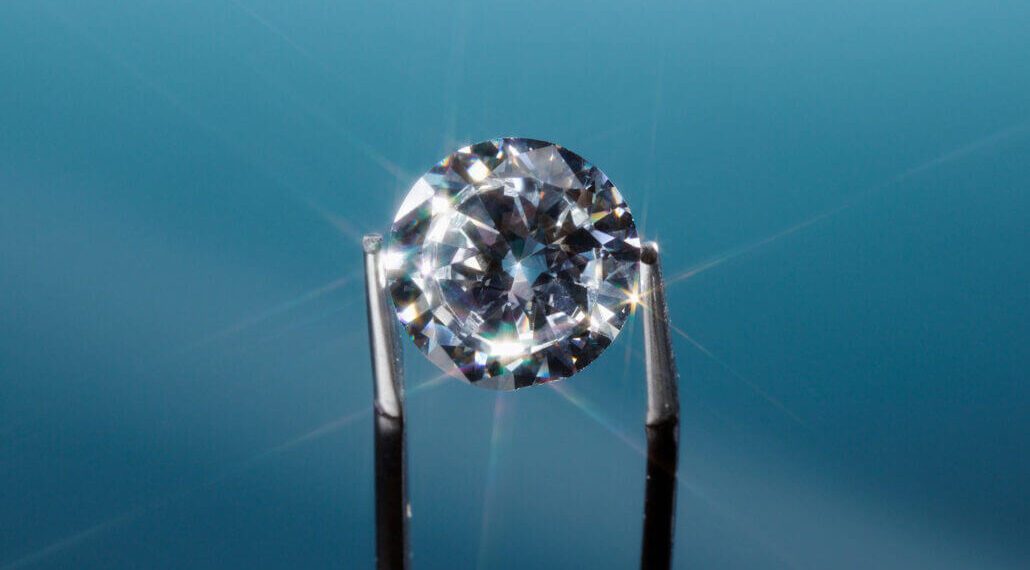Diamonds are one of the most popular gemstones in the world and have been treasured for centuries. But what exactly are diamonds? And how do they form?
In this article, we’ll take a look at the science behind diamonds, from their formation to their many uses. In addition, we’ll dispel some of the myths about diamonds that have arisen over the years.
Table of Contents
So, what are diamonds?
Diamonds are crystals made of pure carbon. In fact, diamonds and graphite (the material in pencil lead) are both made of carbon, but they have very different structures. The difference lies in the way the atoms are arranged.
In a diamond, the carbon atoms are arranged in a cubic structure, meaning they form a lattice of cube-shaped units. This is why diamonds are so hard – their atomic structure makes them incredibly strong and difficult to scratch or chip.
Graphite, on the other hand, has a hexagonal structure, meaning the carbon atoms are arranged in a lattice of hexagon-shaped units. This makes graphite much softer than diamonds, which is why it’s easy to write with.
So, how do diamonds form?
Most diamonds that we see today were formed around 100 miles (160 kilometers) below the Earth’s surface, in the mantle. The mantle is a layer of the Earth that lies between the crust (the thin outer layer) and the core.
The conditions in the mantle are incredibly hot (around 2,000 degrees Fahrenheit, or 1,100 degrees Celsius) and under immense pressure. It’s thought that diamonds form when carbon-rich minerals called eclogites are subjected to these extreme conditions.
Over time, the carbon atoms in the eclogites rearrange themselves into the cubic structure of diamonds. This process can take millions of years.
Most diamonds that form in the mantle are eventually brought to the surface by volcanic eruptions. They end up in kimberlite pipes, which are columns of rock that extend from the Earth’s surface all the way down to the mantle.
What are the different types of diamonds?
There are many different types of diamonds, but they can broadly be divided into two categories: natural diamonds and man-made diamonds.
Natural diamonds are those that have been formed by nature, as we’ve just described. They are found in kimberlite pipes and other geological formations. The colored diamonds that you sometimes see are natural diamonds that have been exposed to trace elements during their formation, which gives them their hue. Some colored diamonds in Utah are used in jewelry, but they are much rarer than clear diamonds.
Man-made diamonds, on the other hand, are created in laboratories. The process of making man-made diamonds is similar to the natural process that takes place in the mantle, but it happens much faster (in just a few days).
What are diamonds used for?
Diamonds have a number of different uses. The most popular is probably jewelry, as diamonds are often used in engagement rings and other pieces of fine jewelry. Diamond rings are usually given to represent eternal love, as diamonds are incredibly strong and durable.
In addition to jewelry, diamonds are also used for industrial purposes. They are used in drill bits and saws because of their hardness, and they are often used in optical equipment because of their ability to refract light.
What are the myths about diamonds?
There are many myths and misconceptions about diamonds. Here are a few of the most common:
Myth 1: Diamonds are rare
This is one of the most popular myths about diamonds. In reality, diamonds are not particularly rare. They are actually quite common in certain parts of the world, such as South Africa and Australia.
Myth 2: Diamonds are valuable
Another common myth about diamonds is that they are valuable. In reality, the value of a diamond depends on a number of factors, such as its size, quality, and color. Some diamonds are worth more than others, but they are not necessarily valuable in the sense that gold or silver is valuable.
Myth 3: Diamonds are indestructible
This is another myth about diamonds that is simply not true. Diamonds may be hard, but they can actually be scratched and chipped quite easily. In fact, diamonds are actually quite brittle, and they can shatter if they are hit with enough force.
Now that you know the truth about diamonds, you can separate fact from fiction the next time you hear someone talking about them!

